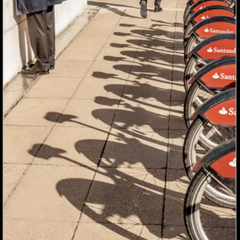
Photographers in club competitions are familiar with judges criticising their images on the basis that they do not follow the rules. Caroline argues that there needs to be a reason behind a rule and set out to demonstrate that there are no rules just a series of tools than can be used in different ways to enhance the message that the photographer is intending to convey by applying some science to the decision making. This can be applied at any stage of the process of making a photograph i.e., in the taking, in the choosing of what to include and exclude and in the postproduction that finalises the image.
Her talk was about photography as visual communication, the psychology of composition, the creation of feel, mood or energy within an image and the choices that are made in composition whilst expressing your own viewpoint and voice. She argued that composition is generally taught as the application of various principles without regard to the psychology of how a viewer interprets an image. She wanted us to understand the impact that our choices make on the viewer and as a consequence to increase the impact that the photograph has. Meaningful and impactful images are the objectives. The photographer should be able to express what they want to say, make the viewer look at what he/she wants them to look at and feel what the photographer wants them to feel.
Part of her thesis was the application of gestalt theory to photography. She illustrated how the brain fills in the blanks when the elements in an image are incomplete. Photographers are generally familiar with the idea that they do not necessarily have to include the whole of a subject in their image as the brain adds what is not there. She illustrated how similarity and contrast help allow the subject of the image to stand out and how separation has effects in images. In the final section we saw examples of the effects of different orientation, crops, the use of light to draw in the eye and the issues of visual weight (find a subject with a red jacket) and creating energy through visual intensity and the use of lines, especially diagonals.
It was an interesting and thoughtful presentation that was well appreciated, and we look forward to some practical application when Caroline judges our Best of Year competition later in the year.
